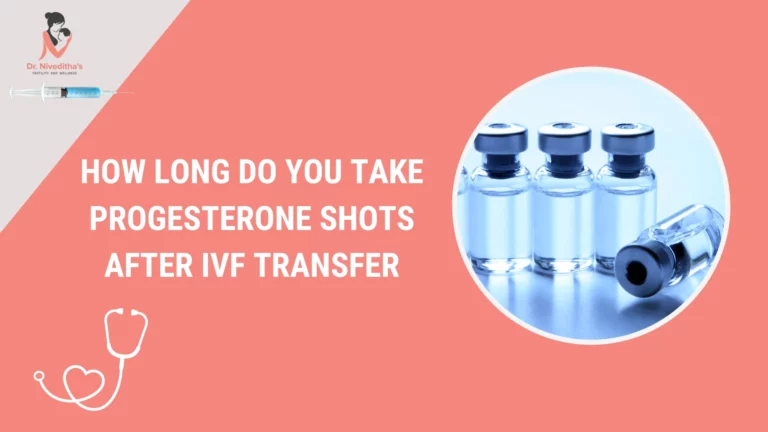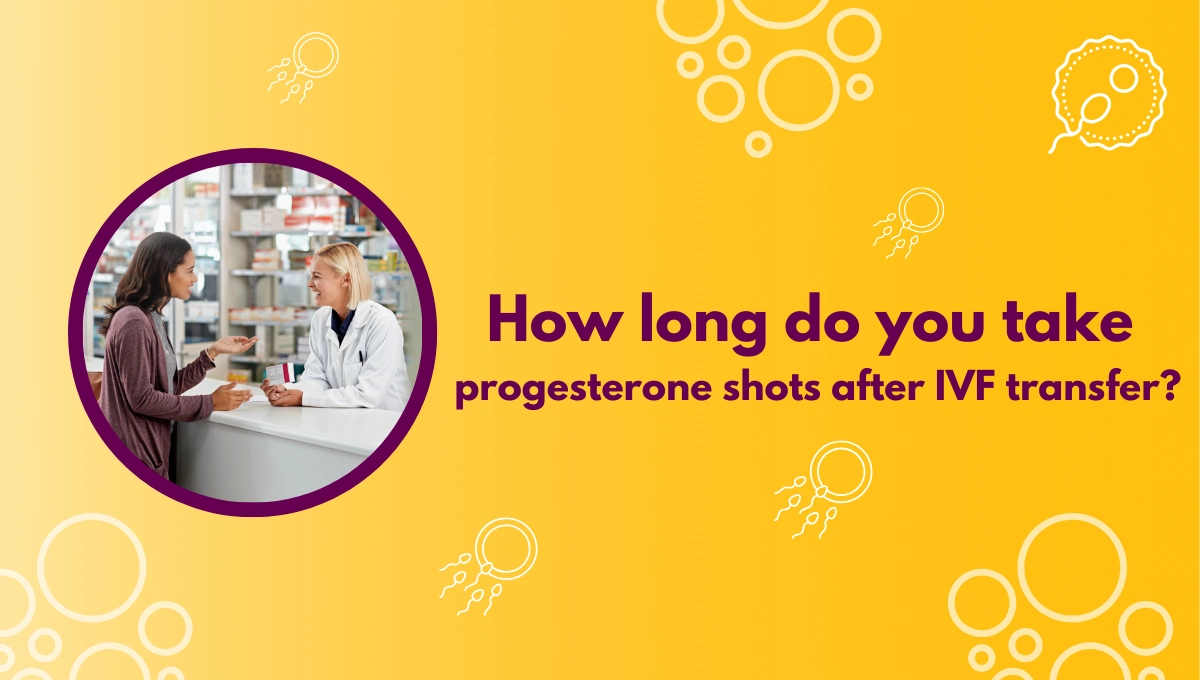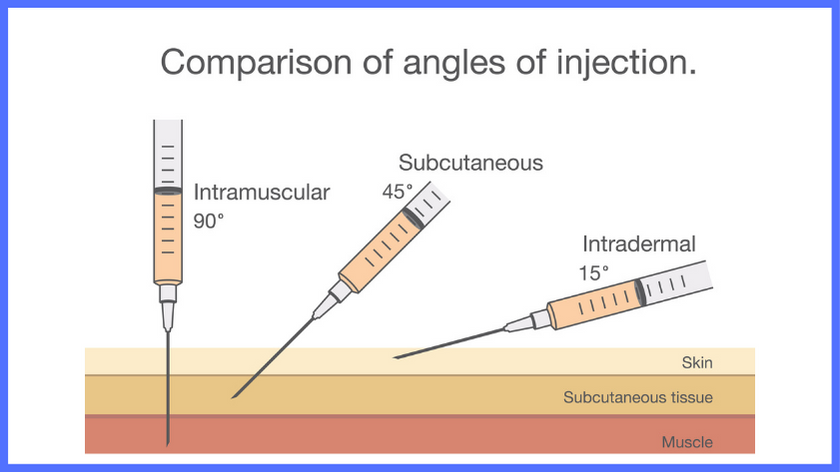How Long Do You Take Progesterone Shots After IVF Transfer?
If you’re going through in vitro fertilization (IVF), you’ve probably heard about progesterone shots. They’re a big part of the process, and chances are, you’re wondering how long you’ll need to keep them up after your embryo transfer. It’s a question that pops up a lot, and for good reason—those shots can feel like a daily reminder of the emotional rollercoaster that is IVF. You might be excited, nervous, or just plain tired of the needle routine. Don’t worry, you’re not alone! This article is here to walk you through everything you need to know about progesterone shots after IVF transfer—how long they last, why they matter, and what you can do to make the journey smoother.
Let’s dive into the details with a friendly, down-to-earth vibe. Think of this as a chat with a friend who’s been there, mixed with some solid science to back it up. By the end, you’ll feel more confident about what’s ahead and maybe even pick up a few tricks to make those shots less of a hassle.
Why Progesterone Shots Are a Big Deal in IVF
Progesterone is like the unsung hero of pregnancy. It’s a hormone your body naturally makes to get your uterus ready for an embryo and keep a pregnancy going strong. In a regular cycle, your ovaries kick into gear after ovulation, pumping out progesterone to thicken the uterine lining. But IVF? That’s a whole different ballgame. The meds you take during IVF—like those that stop you from ovulating too soon—can throw your natural progesterone production out of whack. Plus, when doctors retrieve your eggs, they might scoop up some of the cells that would’ve made progesterone, leaving you short.
That’s where progesterone shots come in. They step up to the plate to make sure your uterus is cozy and ready for that embryo to stick around. Studies show that without enough progesterone, implantation can be trickier, and the risk of miscarriage might go up. So, these shots aren’t just a random step—they’re a key player in giving your embryo the best shot at success.
For fresh IVF cycles (where the embryo is transferred right after egg retrieval), your ovaries might still churn out some progesterone, but it’s often not enough. In frozen embryo transfer (FET) cycles, it’s even more critical because your body might not be making any progesterone at all if the cycle is fully medicated. Either way, those shots are your backup plan, and they’re worth it.
How Long Do You Actually Take Progesterone Shots?
So, the million-dollar question: how long do you need to stick with these shots after your embryo transfer? The short answer is usually 8 to 12 weeks, but it depends on your situation. Let’s break it down.
The Standard Timeline: 8-10 Weeks
For most people, progesterone shots start a few days before the embryo transfer and keep going until about 8 to 10 weeks of pregnancy. Why that range? Around this time, the placenta—the amazing organ your body grows to support the baby—starts taking over progesterone production. Doctors call this the “luteal-placental shift.” Once the placenta’s got it covered, you can usually say goodbye to the shots. For an FET, that’s about 8 weeks after the transfer, since pregnancy weeks are counted from the transfer date plus two weeks (to match a natural cycle).
In a fresh IVF cycle, it might stretch a bit longer, closer to 10 weeks, because your ovaries are still recovering from egg retrieval. Your doctor will likely check your progesterone levels with a blood test to confirm when it’s safe to stop.
When It Might Be Different
Not everyone follows the same playbook. Some clinics keep you on progesterone until 12 weeks, just to be extra sure the placenta’s fully in charge. Others might stop earlier—like at 6 weeks—if your levels look great and you’re doing a natural FET where your body’s already making some progesterone. If you’ve had miscarriages before or your progesterone levels are on the low side, your doctor might extend the shots past 10 weeks for added peace of mind.
Here’s a quick rundown of what might affect your timeline:
- Fresh vs. Frozen Transfer: Fresh cycles might need a little longer since your ovaries are still catching up.
- Your Body’s Response: If your natural progesterone is low, you might stick with shots longer.
- Clinic Protocol: Every fertility clinic has its own style—some are cautious, others lean on the latest research to shorten the duration.
- Pregnancy Test Results: If the test is negative, you’ll stop right away. If it’s positive, you’re in for the full ride until the placenta kicks in.
Real-Life Example
Take Sarah, a 32-year-old who did a frozen embryo transfer. Her clinic started her on progesterone shots five days before the transfer. After a positive pregnancy test, she kept up the daily shots until her 8-week ultrasound showed a healthy heartbeat. Her doctor did a blood test, saw her levels were solid, and gave her the green light to stop at 8 weeks post-transfer. Sarah was thrilled—no more sore hips!
What Happens If You Stop Too Soon—or Too Late?
Timing is everything with progesterone shots, and it’s natural to wonder what happens if you mess it up. Let’s look at both sides.
Stopping Too Early
If you ditch the shots before the placenta’s ready to take over, you could put your pregnancy at risk. Low progesterone in those early weeks might make it harder for the embryo to stay implanted, raising the chance of miscarriage. A 2022 study found that women with progesterone levels below 10 ng/mL around the time of transfer had lower pregnancy rates. That’s why doctors are so careful about keeping you on the shots until they’re sure your body’s got it handled.
Sticking With It Too Long
On the flip side, going longer than needed won’t hurt you or the baby—it’s just extra effort (and maybe some extra soreness). Some clinics play it safe and keep you on shots until 12 weeks because there’s no hard cutoff where the placenta suddenly takes over—it’s more of a gradual handoff. The downside? More injections than you might need, which can get old fast. Plus, progesterone in oil can sometimes cause lumps or irritation at the injection site, so why drag it out if you don’t have to?
Finding the Sweet Spot
Your doctor’s goal is to hit that sweet spot—long enough to support your pregnancy, but not so long that you’re overdoing it. Blood tests and ultrasounds are their go-to tools to figure out when to pull the plug. Trust their lead, but don’t be shy about asking why they’re choosing a certain timeline. It’s your body, after all!
Fresh vs. Frozen Transfers: Does It Change the Game?
You might’ve noticed we’ve mentioned fresh and frozen transfers a few times. They’re not the same when it comes to progesterone shots, so let’s dig into the differences.
Fresh IVF Transfers
In a fresh cycle, your eggs are retrieved, fertilized, and transferred within days. Your ovaries are still in overdrive from all those fertility meds, so they’re making some progesterone. But here’s the catch: the drugs that stop you from ovulating too early (like GnRH agonists) can mess with your natural progesterone output. Plus, egg retrieval might remove some progesterone-making cells. That’s why you still need shots, usually for 8-10 weeks, until the placenta steps up.
Frozen Embryo Transfers (FET)
With an FET, things are a bit more controlled. If it’s a medicated cycle (the most common type), your ovulation is suppressed, and your body isn’t making progesterone on its own. The shots (or other progesterone forms) are the only source keeping your uterus ready. You’ll start them a few days before the transfer and keep going for about 8 weeks after if you’re pregnant. In a natural FET, where you ovulate on your own, you might not need shots at all—just a little boost from vaginal progesterone, and the duration could be shorter.
Which One’s Easier?
Neither is “easier” when it comes to shots—they’re about the same in terms of how long you’ll need them if pregnancy happens. But FETs give doctors more control over your hormone levels, which some say can improve implantation rates. A 2023 study showed FETs with progesterone support had a slightly higher live birth rate than fresh transfers. Still, it’s all about what works for you and your doctor’s plan.

Making Progesterone Shots Less of a Pain (Literally)
Let’s be real—progesterone shots aren’t exactly a spa day. They’re intramuscular, meaning they go deep into your muscle (usually your hip or butt), and the oil they’re mixed with can make them sting. But there are ways to make them more bearable. Here’s what’s worked for tons of IVF warriors:
Tips to Ease the Sting
- Warm It Up: Let the syringe sit in a warm (not hot!) spot—like under your arm—for a few minutes. Warm oil flows easier and hurts less.
- Switch Sides: Rotate between your left and right hip each day to give your muscles a break.
- Massage After: Rub the spot gently for a minute to spread the oil and avoid lumps.
- Ice First: Numb the area with an ice pack for 30 seconds before the shot—it dulls the pain.
- Relax: Tense muscles make it worse. Take a deep breath and let your body loosen up.
Shot Schedule Hack
Set a daily alarm so you don’t forget—consistency matters. Some folks like doing it right after a shower when their muscles are warm and relaxed. Find a routine that fits your life.
Interactive Checklist: Your Shot Survival Kit
✔️ Ice pack for numbing
✔️ Warm towel or heating pad to prep the syringe
✔️ Comfy spot to sit or lie down
✔️ A partner or mirror to help with aim
✔️ A treat for after (chocolate, anyone?)
What’s your go-to trick for making shots easier? Drop it in the comments—we’d love to hear!
Are There Alternatives to Shots?
If the idea of daily needles makes you cringe, you’re not alone. Good news: there are other ways to get progesterone into your system. Let’s explore your options.
Vaginal Progesterone
This comes as suppositories, gels, or tablets you insert daily. It’s less invasive—no needles!—and studies show it’s just as effective for fresh IVF cycles. A 2019 study found live birth rates were similar between vaginal progesterone and shots. The catch? Some people find it messy or uncomfortable, and you might need to use it more often (up to three times a day).
Oral Progesterone
Pills sound easy, right? They are, but they’re not as common because your liver breaks down most of the progesterone before it reaches your uterus. Research says they’re less effective than shots or vaginal options, so they’re usually a backup plan.
Subcutaneous Shots
These are like progesterone shots’ little cousin—shallower injections you can do yourself in your belly or thigh. They’re less painful than intramuscular shots, but they’re newer, and not all clinics offer them yet.
Which One’s Right for You?
It depends on your comfort level and your doctor’s take. Shots are the gold standard for FETs because they deliver a steady dose straight to your bloodstream. But if you’re dreading them, talk to your clinic about switching to vaginal progesterone—lots of people do, and it works great for many.

What Does the Latest Research Say?
Science is always digging deeper into IVF, and progesterone’s no exception. Here’s what’s new and noteworthy as of April 2025.
Shorter Durations Might Work
A 2023 study suggested that stopping progesterone at 6 weeks (instead of 8-10) didn’t hurt pregnancy rates in women with good progesterone levels early on. It’s not standard yet, but it’s a hint that shorter timelines could be an option down the road—less time with needles? Yes, please!
Levels Matter More Than Method
Recent research shows your progesterone level at transfer time might be more important than how you get it there. A 2022 trial found that women with levels above 15 ng/mL had better outcomes, whether they used shots or vaginal progesterone. Your doctor might tweak your dose based on this.
Natural Cycles Are Gaining Traction
For FETs, natural cycles (where you ovulate and make some progesterone) are trending. A 2024 study showed they might cut down on shot time without lowering success rates. It’s not for everyone, but it’s worth asking about if you’re shot-weary.
These findings aren’t set in stone—IVF is super personal—but they’re shaping how doctors think about progesterone. Stay curious and chat with your clinic about what’s fresh in the research world.

Listening to Your Body: Signs to Watch For
Progesterone shots are a science, but your body’s got its own story to tell. Here’s what to keep an eye on while you’re in the thick of it.
Normal Stuff
- Sore Spots: Redness or lumps at the injection site are common. They usually fade in a day or two.
- Tiredness: Progesterone can make you feel sleepy—it’s prepping your body for pregnancy, after all.
- Light Spotting: A little bleeding early on isn’t rare and doesn’t always mean trouble.
When to Call Your Doctor
- Heavy Bleeding: Anything more than light spotting needs a check-in.
- Severe Pain: If the injection site swells a lot or hurts for days, it could be an infection.
- Feeling Off: Dizziness, bad cramps, or anything weird—don’t wait to ask.
Your clinic’s there to help, so don’t hesitate to reach out. Better safe than stressed!
Interactive Quiz: How Well Do You Know Your Progesterone Plan?
Let’s have some fun and test your IVF smarts! Answer these quick questions:
- When do most people stop progesterone shots after a positive pregnancy test?
a) 4 weeks
b) 8-10 weeks
c) 14 weeks - Why do you need progesterone shots in IVF?
a) To boost egg production
b) To support the uterine lining
c) To prevent ovulation - What’s one way to make shots less painful?
a) Use a bigger needle
b) Warm the syringe
c) Skip the ice pack
Answers: 1) b, 2) b, 3) b. How’d you do? Share your score below!
Beyond the Shots: Emotional and Practical Support
IVF isn’t just about needles—it’s a mental marathon too. Progesterone shots can feel like a daily chore, but they’re also a sign you’re fighting for something big. Here’s how to keep your spirits up.
Lean on Your Crew
Tell your partner, family, or friends what you’re going through. Having someone to vent to—or even help with the shots—can lighten the load. Sarah’s husband turned shot time into a mini ritual with music and a high-five after. Find your vibe!
Plan Ahead
Stock up on supplies (syringes, alcohol wipes, a sharps container) so you’re not scrambling. Keep a calendar to track your doses—it’s satisfying to check off each day.
Treat Yourself
After a shot, reward yourself with something small—a favorite snack, a cozy show, or a quick walk. It’s a little win in a big process.

A Peek Into the Future: What’s Next for Progesterone in IVF?
IVF’s always evolving, and progesterone’s part of that story. Here are three things that might shake up how long you take those shots:
Smarter Testing
New blood tests could pinpoint exactly when your placenta’s ready, cutting down on guesswork. Imagine stopping shots a week earlier because science says it’s cool!
Better Delivery Systems
Researchers are working on progesterone patches or long-acting shots that last a week instead of a day. Fewer pokes, same support—sounds dreamy, right?
Personalized Plans
With more data, doctors might tailor your progesterone timeline to your exact hormone levels and cycle type. One-size-fits-all could become old news.
These aren’t here yet, but they’re on the horizon. For now, you’re rocking the tried-and-true method—and that’s pretty awesome.
Wrapping It Up: Your Progesterone Journey
So, how long do you take progesterone shots after IVF transfer? For most, it’s 8-10 weeks, maybe 12 if your doctor’s extra cautious. It’s a stretch of time that can feel endless when you’re in it, but it’s all about giving your embryo the best start. Whether you’re doing a fresh transfer or an FET, those shots are your wingman, keeping your uterus primed until the placenta takes the reins.
You’ve got options too—shots aren’t the only game in town, and new research might shorten the timeline or make it easier someday. Until then, lean on tricks to ease the pain, listen to your body, and celebrate every step. You’re not just taking shots; you’re building a future. How cool is that?
Got questions or a story to share? Pop it in the comments—I’d love to hear how you’re navigating this wild IVF ride!





